WL Zhao
Epigallocatechin-3-gallate protects bovine ruminal epithelial cells against lipopolysaccharide-induced inflammatory damage by activating autophagy
Zhao, WL; Shen, TY; Zhao, BC; Li, ML; Deng, ZJ; Huo, YH; Aernouts, B; Loor, JJ; Psifidi, A; Xu, C
Authors
TY Shen
BC Zhao
ML Li
ZJ Deng
YH Huo
B Aernouts
JJ Loor
A Psifidi
C Xu
Abstract
BackgroundSubacute ruminal acidosis (SARA) causes an increase in endotoxin, which can induce immune and inflammatory responses in the ruminal epithelium of dairy cows. In non-ruminants, epigallocatechin-3-gallate (EGCG), a major bioactive ingredient of green tea, is well-known to alleviate inflammation. Whether EGCG confers protection against SARA-induced inflammation and the underlying mechanisms are unknown.ResultsIn vivo, eight ruminally cannulated Holstein cows in mid-lactation were randomly assigned to either a low-concentrate (40%) diet (CON) or a high-concentrate (60%) diet (HC) for 3 weeks to induce SARA (n = 4). Cows with SARA had greater serum concentrations of tumor necrosis factor (TNF)-alpha and interleukin-6, and epithelium had histological signs of damage. In vitro, immortalized bovine ruminal epithelial cells (BREC) were treated with lipopolysaccharide (LPS) to imitate the inflammatory damage caused by SARA. Our data revealed that BREC treated with 10 mu g/mL LPS for 6 h successfully induce a robust inflammatory response as indicated by increased phosphorylation of I kappa B alpha and nuclear factor kappa-B (NF-kappa B) p65. Pre-treatment of BREC with 50 mu mol/L EGCG for 6 h before LPS challenge promoted the degradation of NLR family pyrin domain containing 3 (NLRP3) inflammasome through activation of autophagy, which further repressed activation of NF-kappa B pathway targeting Toll-like receptor 4 (TLR4). Analyses also revealed that the ECGG upregulated tight junction (TJ) protein expression upon incubation with LPS.ConclusionsSubacute ruminal acidosis causes ruminal epithelium injury and systemic inflammation in dairy cows. However, the anti-inflammatory effects of EGCG help preserve the integrity of the epithelial barrier through activating autophagy when BREC are exposed to LPS. Thus, EGCG could potentially serve as an effective therapeutic agent for SARA-associated inflammation.
Citation
Zhao, W., Shen, T., Zhao, B., Li, M., Deng, Z., Huo, Y., Aernouts, B., Loor, J., Psifidi, A., & Xu, C. (2024). Epigallocatechin-3-gallate protects bovine ruminal epithelial cells against lipopolysaccharide-induced inflammatory damage by activating autophagy. Journal of Animal Science and Biotechnology, 15(1), https://doi.org/10.1186/s40104-024-01066-9
| Journal Article Type | Article |
|---|---|
| Acceptance Date | Jun 19, 2024 |
| Online Publication Date | Aug 9, 2024 |
| Publication Date | 2024 |
| Deposit Date | Aug 20, 2024 |
| Publicly Available Date | Aug 20, 2024 |
| Journal | Journal of Animal Science and Biotechnology |
| Electronic ISSN | 2049-1891 |
| Publisher | BioMed Central |
| Peer Reviewed | Peer Reviewed |
| Volume | 15 |
| Issue | 1 |
| DOI | https://doi.org/10.1186/s40104-024-01066-9 |
| Keywords | Bovine ruminal epithelial cell; Epigallocatechin-3-gallate; Inflammation; Subacute ruminal acidosis; RUMEN LIPOPOLYSACCHARIDE; BEEF-CATTLE; ACIDOSIS; HEALTH; INHIBITION; ENDOTOXINS; DISEASE; INJURY |
Files
Epigallocatechin-3-gallate Protects Bovine Ruminal Epithelial Cells Against Lipopolysaccharide-induced Inflammatory Damage By Activating Autophagy
(16.9 Mb)
PDF
Licence
http://creativecommons.org/licenses/by/4.0/
Publisher Licence URL
http://creativecommons.org/licenses/by/4.0/
Version
VoR
You might also like
Characterisation of phenotypic patterns in equine exercise-associated myopathies
(2024)
Journal Article
Does inbreeding contribute to pregnancy loss in Thoroughbred horses?
(2024)
Journal Article
Downloadable Citations
About RVC Repository
Administrator e-mail: publicationsrepos@rvc.ac.uk
This application uses the following open-source libraries:
SheetJS Community Edition
Apache License Version 2.0 (http://www.apache.org/licenses/)
PDF.js
Apache License Version 2.0 (http://www.apache.org/licenses/)
Font Awesome
SIL OFL 1.1 (http://scripts.sil.org/OFL)
MIT License (http://opensource.org/licenses/mit-license.html)
CC BY 3.0 ( http://creativecommons.org/licenses/by/3.0/)
Powered by Worktribe © 2025
Advanced Search
